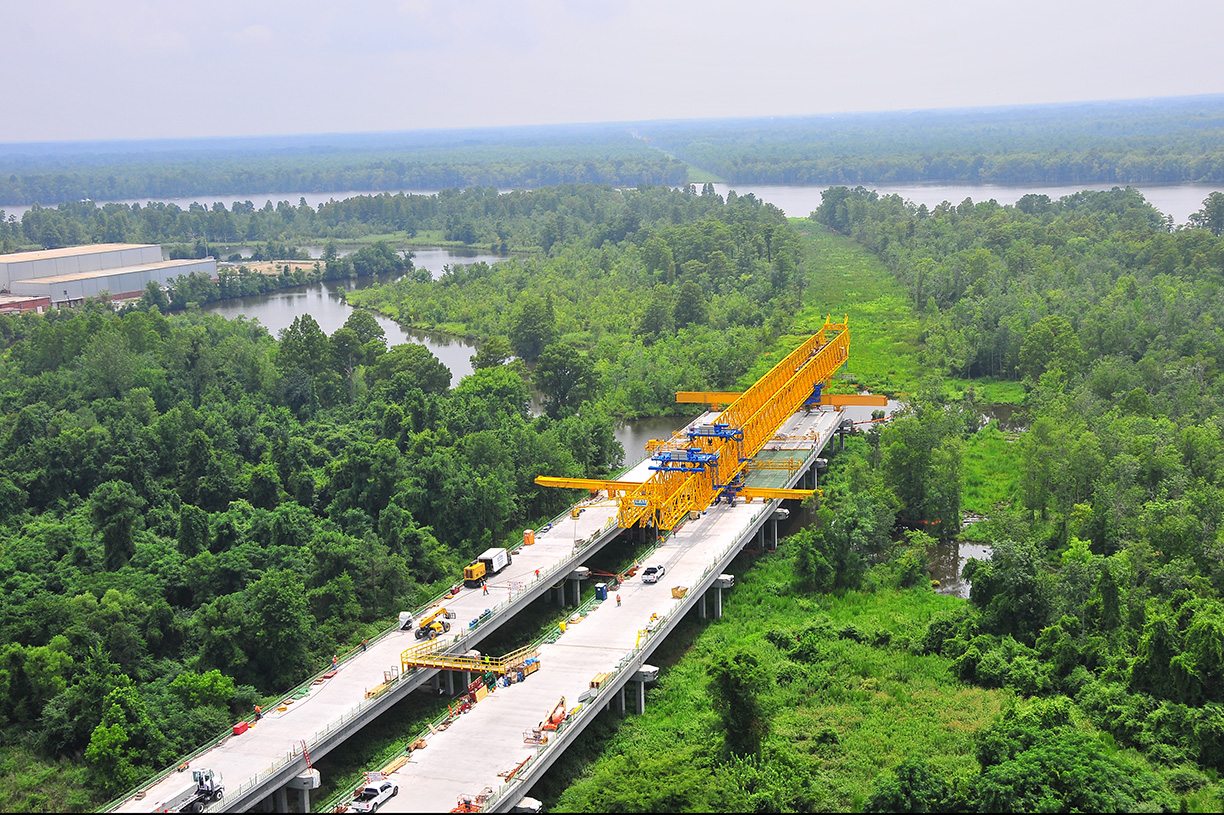Expertly optimizing design.
The construction industry is changing and there is one striking trend: an ever-growing demand for project delivery using alternative methods of procurement. Design-build and P3 projects are an integral part of Flatiron’s business, so we recognize that the design is just as important as the build. Our Technical Services Group (TSG) provides technical expertise during each phase of a project’s life cycle.
Our Approach
We support the entire process from design through construction:
- Design reviews and checks
- Specialized designs
- Construction engineering
- Peer/constructability reviews
- Value engineering
- Technical support
- Expert advice
- Forensic analysis
- Design coordination and management
- Knowledge management and other services
The TSG fosters innovation and increases value. Our specialized engineering experts develop and implement smart design techniques that provide cost savings and competitive advantages.

Provide technical and engineering solutions:
• Optimize design with construction-ready solutions
• Offer independent design checks and technical advice
• Enhance design outcomes
• Mitigate risk through smart design

Connect, develop, and promote talent:
• Bring together the best knowledge and capability across Flatiron’s global network
• Provide professional development opportunities
• Promote engineering talent

Leverage emerging research and technologies:
• Seek and apply new developments in engineering, construction methods and technology
• Promote best practices
• Capture and convey lessons learned

Technical Services Group Projects
We build many of North America’s signature infrastructure projects.
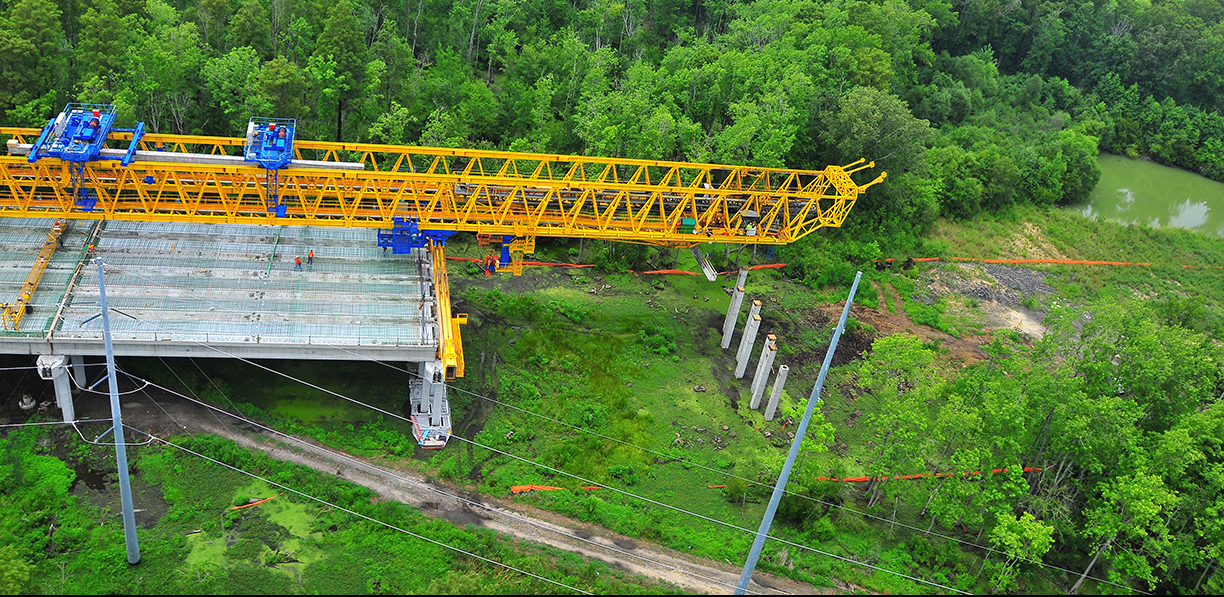
Washington Bypass
North Carolina
Challenge:
A three-mile long bridge over environmentally sensitive wetlands and the Pamlico-Tar River.
Solution:
Flatiron developed innovative construction methods to reduce environmental impacts using a Tilting Lead Gantry. Flatiron developed and patented (U.S. Patent No. 7,520,014 B2) a top-down construction technique to ensure minimal disturbance to the surrounding environment. This span-by-span construction method used the newly constructed permanent structure for personnel access and material deliveries.
The process consisted of self-contained gantries capable of performing all tasks associated with the bridge construction, including driving the precast piles, building the bent caps, erecting the 120-foot-long precast girders, and pouring the deck. All of these operations were performed without the use of temporary access trestles, thus significantly reducing environmental disturbances.
This method required designing and manufacturing a specialized piece of equipment—a launching gantry designed and supplied by Deal of Italy with special pile driving equipment designed by Bermingham of Canada—never used before to actually drive pile from the cantilevered end of the gantry.
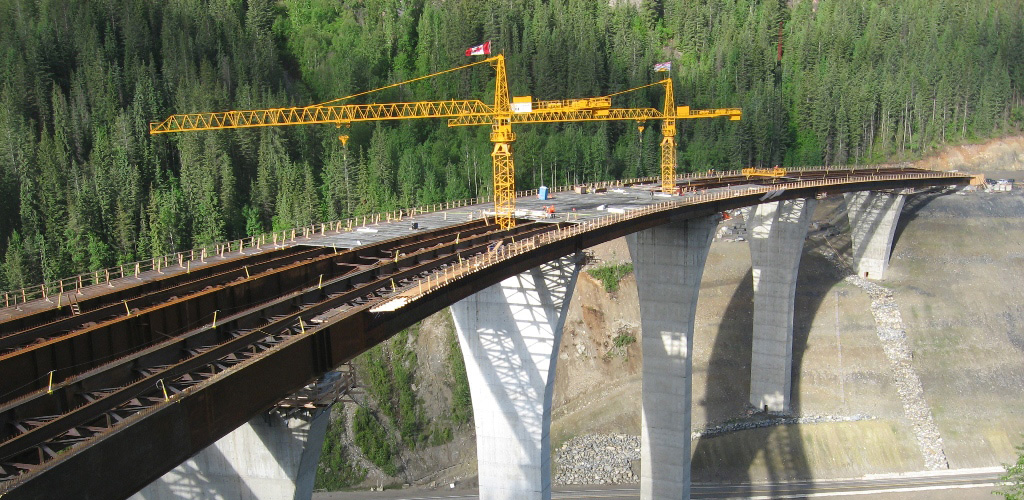
Kicking Horse Pass
British Columbia
Challenge:
A curved bridge over a very steep canyon through the Canadian Rocky Mountains.
Solution:
This was the first incrementally launched bridge on a curve.
The girder launching process involved launching four main steel girders uphill from west to east using a hydraulic launch system that erects two girder pairs one span at a time until the total length has been launched. The team erected the girder pairs in a 410-foot launching bed located behind the west abutment that had been graded at 6 percent with a curve to match the profile of the bridge. The team erected each girder pair, along with all the cross frames and lateral bracing, on the launching bed. The team then launched two girders approximately 250 feet to the next pier where they rested while the next two pairs were erected and launched.
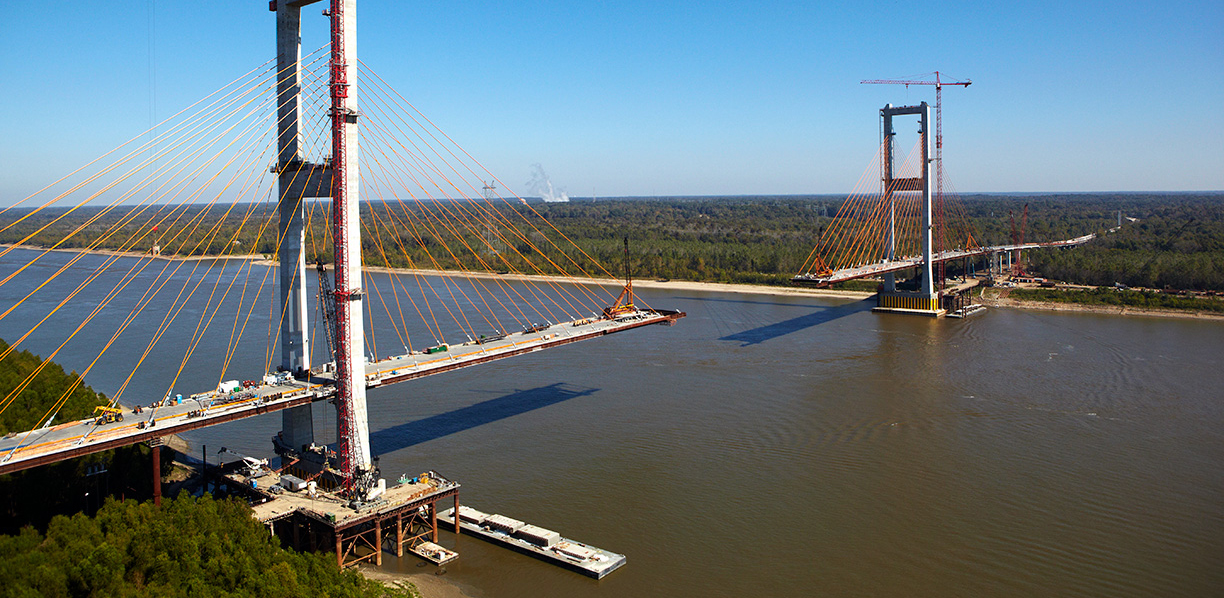
John James Audubon Bridge
Louisiana
Challenge:
Longest cable-stayed bridge in North America; bridge over the Mississippi River.
Solution:
Flatiron engineers developed a complex 48-point synchronous lowering system for the John James Audubon cable-stayed bridge. Because the Mississippi River is fast and deep, Flatiron chose to construct the cofferdam above the river and lowering it using a jacking system.
About 10,000 feet of hydraulic hoses were used to run the jacking system that lowered the 2,500-ton cofferdams (one each on the east and west sides) into the river. To ensure the system and process ran smoothly workers did a mock-up of the cofferdam in a nearby lay down yard.
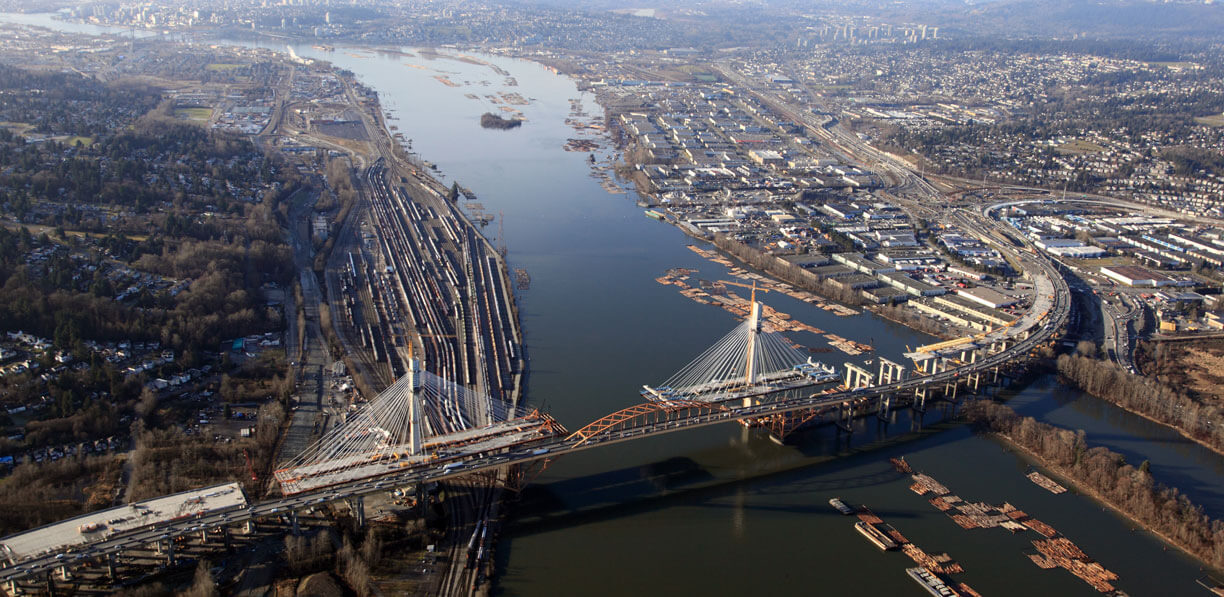
Port Mann Bridge
British Columbia
Challenge:
Construction of the longest cable-stayed bridge in North America (at time of construction).
Largest drilled shaft static load test ever performed in the world.
Solution:
Flatiron planned the framework and template to support the 20 stay tubes and the rebar for the S1 Pylon Knuckle.
The Vigintipod was designed to support all 20 stay tubes and 75 percent of all the rebar in the knuckle, and could be split down the middle so the tower crane could have the capacity to place each half. It was picked and installed 400 feet up in the air.
The total pick weight was just over 70,000 lbs, which was about 90 percent overall capacity of the tower crane.

